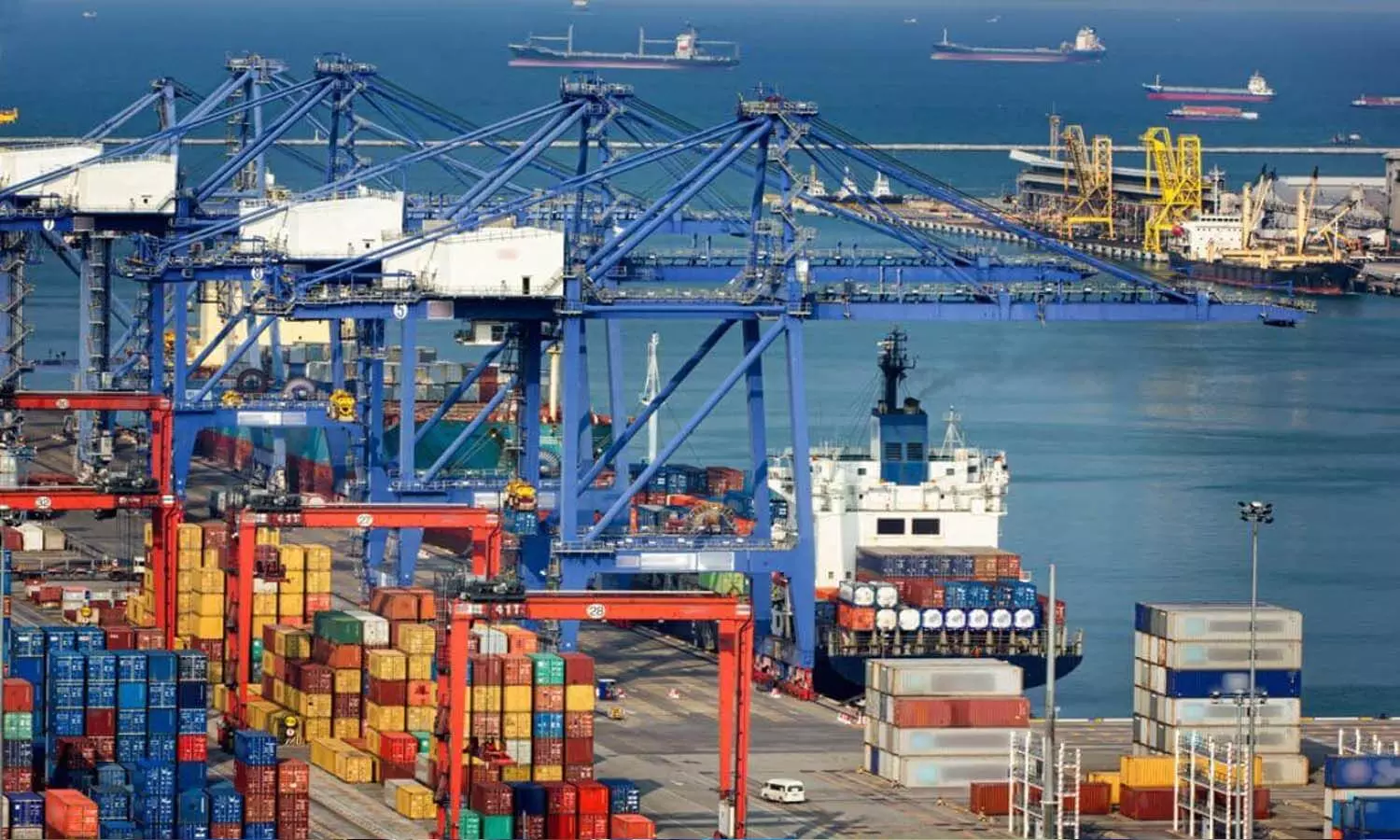In a significant development for India’s maritime sector, Union Minister for Ports, Shipping and Waterways (MoPSW), & AYUSH, Sarbananda Sonowal, announced a comprehensive vision aimed at boosting the country’s maritime strength.
At the 19th Maritime States Development Council meeting in Kevadia, Sonowal revealed plans to establish the Bureau of Port Security, underscoring the government’s commitment to upgrading security across all ports. The minister also emphasized sustainable development, unveiling ambitious Hydrogen Hubs to be developed across both Central and State Government ports.
“All Central Government and State Government ports will explore the possibility of creating Hydrogen Hubs,” declared Sonowal, noting that Deendayal Port Authority has already finalized MoUs worth Rs 1.68 lakh crore for this initiative.
Highlighting India’s commitment to quadrupling port capacity by 2047 under the Amrit Kaal Vision for Ports, Sonowal announced that the country’s total port capacity would surge from around 2,600 MTPA to more than 10,000 MTPA in 2047. This vision is part of the larger plan to position India as a formidable maritime player on the global stage.
The two-day meeting aimed at enhancing coordination between major and notified ports, State Maritime Boards, State Governments, and Union Territories concluded today. Sonowal expressed gratitude for the critical role played by the Maritime States Development Council, emphasizing its significance in shaping the trajectory of the nation’s maritime sector.
The minister also pointed to India’s growing maritime stature, citing the upcoming Global Maritime India Summit 2023 scheduled to be held in New Delhi from October 17th-19th. Sonowal announced the participation of all maritime states and Union Territories, making it one of the largest maritime summits in the country.
Regarding investment opportunities, Sonowal highlighted prospects exceeding 10 lakh crores, symbolizing not just economic growth but also the potential to generate employment for over 15 lakh youths in the country. Private sector involvement, especially through Public-Private Partnership (PPP) terminals, is anticipated to rise to approximately 85%, enhancing efficiency and facilitating scaled operations.
A discernible focus on enhancing cargo movement on India’s National Waterways was emphasized, with ambitious targets set to achieve 500 MTPA by 2047. Sonowal also acknowledged the success of the Sagarmala Programme, which has significantly enhanced port capacity, connectivity, and operational efficiency over the past eight years.
During the meeting, Union Minister of State, Shripad Naik, stressed the importance of embracing new-age technologies and fostering sustainable living practices. Shantanu Thakur, Union Minister of State, highlighted the unparalleled importance of the Indian maritime sector in the nation’s economy, security, and strategic advancement.
Representatives from various states, including Gujarat, Karnataka, and Tamil Nadu, expressed their commitment to sustainable growth in the maritime sector and showcased specific initiatives geared towards maritime development.
The discussions on Day Two covered a range of topics, including the implementation of the Sagarmala Programme, development of the National Maritime Heritage Complex, challenges and opportunities for RoPax/Ferries, and road & rail port connectivity.
The maritime sector in India is poised for substantial growth, with these strategic initiatives and collaborations laying the foundation for a robust maritime future.
However there are some challenges that are needed to be overcome:
1. Financial Hurdles: Implementing projects on such a grand scale, especially with private sector involvement, may encounter financial challenges. Raising funds for massive investments and sustaining them over the long term can be a hurdle.
2. Infrastructure Development Delays: Large-scale infrastructure projects often face delays due to regulatory approvals, environmental clearances, and logistical challenges. Meeting the ambitious timelines for port capacity expansion could be a challenge.
3. Technological Adoption: Implementing hydrogen hubs and embracing new-age technologies might encounter resistance or challenges related to technological adoption, including the need for skilled personnel.
4. Security Implementation: Establishing the Bureau of Port Security is crucial, but ensuring its effective implementation across all ports presents a complex challenge. Addressing security concerns without disrupting port operations is a delicate balance.
5. Public-Private Partnership Challenges: While increasing private sector involvement is a key goal, maintaining a balance between private interests, public needs, and regulatory requirements can be challenging. Striking the right balance in PPP agreements is critical.
6. Environmental Considerations: Sustainable development, especially in the maritime sector, involves navigating environmental considerations. Ensuring that ambitious projects align with environmental regulations and principles can be challenging.
7. Cargo Movement Targets: Achieving the ambitious target of 500 MTPA in cargo movement on National Waterways by 2047 might face challenges related to waterway infrastructure development, regulatory clearances, and operational efficiency.
8. Global Economic Factors: The success of these plans is also influenced by global economic conditions. Changes in global trade dynamics, economic downturns, or geopolitical factors could impact the maritime sector.
9. Coordination Challenges: Coordinating efforts between various states, Union Territories, and central authorities to realize the vision for ports and maritime development requires seamless coordination, which can be challenging.
10. Approval Processes: Securing approvals for key projects, especially in coastal regions, might face challenges related to environmental concerns, local opposition, and regulatory complexities.
These inferred challenges highlight the complexity of implementing such ambitious plans and the need for comprehensive strategies to address potential obstacles.







2 thoughts on “India Unveils Ambitious Maritime Plan: Setting Sail for a Stronger Future Amidst Challenges”